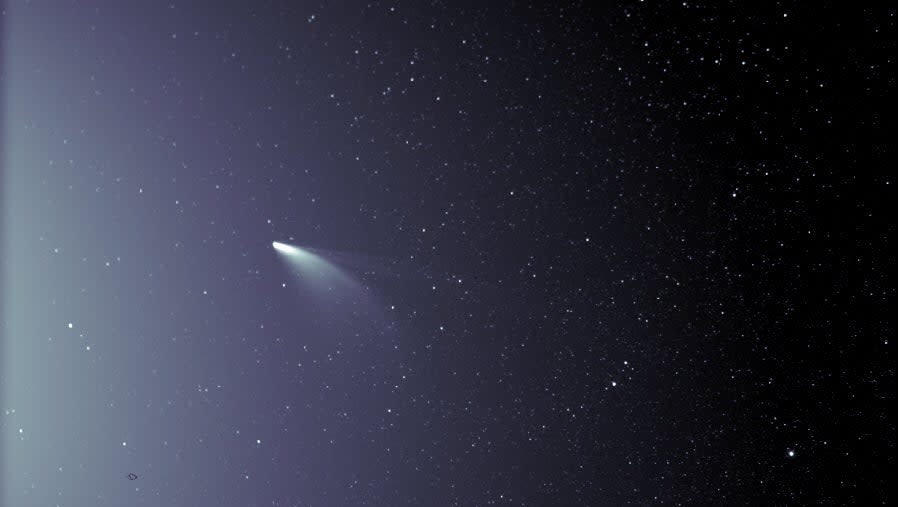Neowise comet makes closest approach to Earth – here’s how to see it

The comet Neowise has made its closest pass of Earth, giving skygazers around the world the best chance to view the celestial visitor.
It is one of the few comets this century that can be seen with the naked eye, and has been visible throughout the month of July.
The night of 22 July marked the perigee point, or closest distance to Earth, before it begins its journey back out towards the furthest reaches of the solar system.
The comet was first discovered in March, though its distance from the Earth made it difficult to spot. There were fears that it would disintegrate as it flew by the sun, however it remained in tact to swing close by Earth.
At its closest point, Neowise was within 64.3 million miles of Earth, according to Nasa's orbit calculator.
For sky watchers in the Northern Hemisphere, the best time to see the comet is around an hour after sunset in the constellation of Ursa Major. This can be found just below the popular Big Dipper constellation, also known as the Plough.
For those in areas with poor visibility due to bad weather or light pollution, a live stream of the comet will be broadcast on YouTube by the Virtual Telescope Project.
Some astronomers have complained that the Starlink satellite network has obstructed views of the comet, with timelapse images resulting in streaks across the sky.
17 30-second images of the comet added up by @cielodecanarias, completely photobombed by @elonmusk's #Starlink satellites. It's a few hundreds of them right now,there will be a few thousands in the near future. @SpaceX is committed to coating orienting them better but still.... pic.twitter.com/TYtTf5xwhc
— Julien Girard (@djulik)
There are currently more than 400 Starlink satellites orbiting the Earth as part of SpaceX's plan to beam high-speed internet down to Earth.
The private space firm eventually hopes to form a constellation of around 12,000 satellites, though it is already taking measures to make them less visible.
The Neowise comet will continue to be visible over the coming days but will slowly become increasingly difficult to view.
Apps like SkyPortal and SkySafari 6 will help budding astronomers locate it as it disappears away from Earth.
Read more
Stunning images show comet NEOWISE as it flies through the sky

 Yahoo Finance
Yahoo Finance 